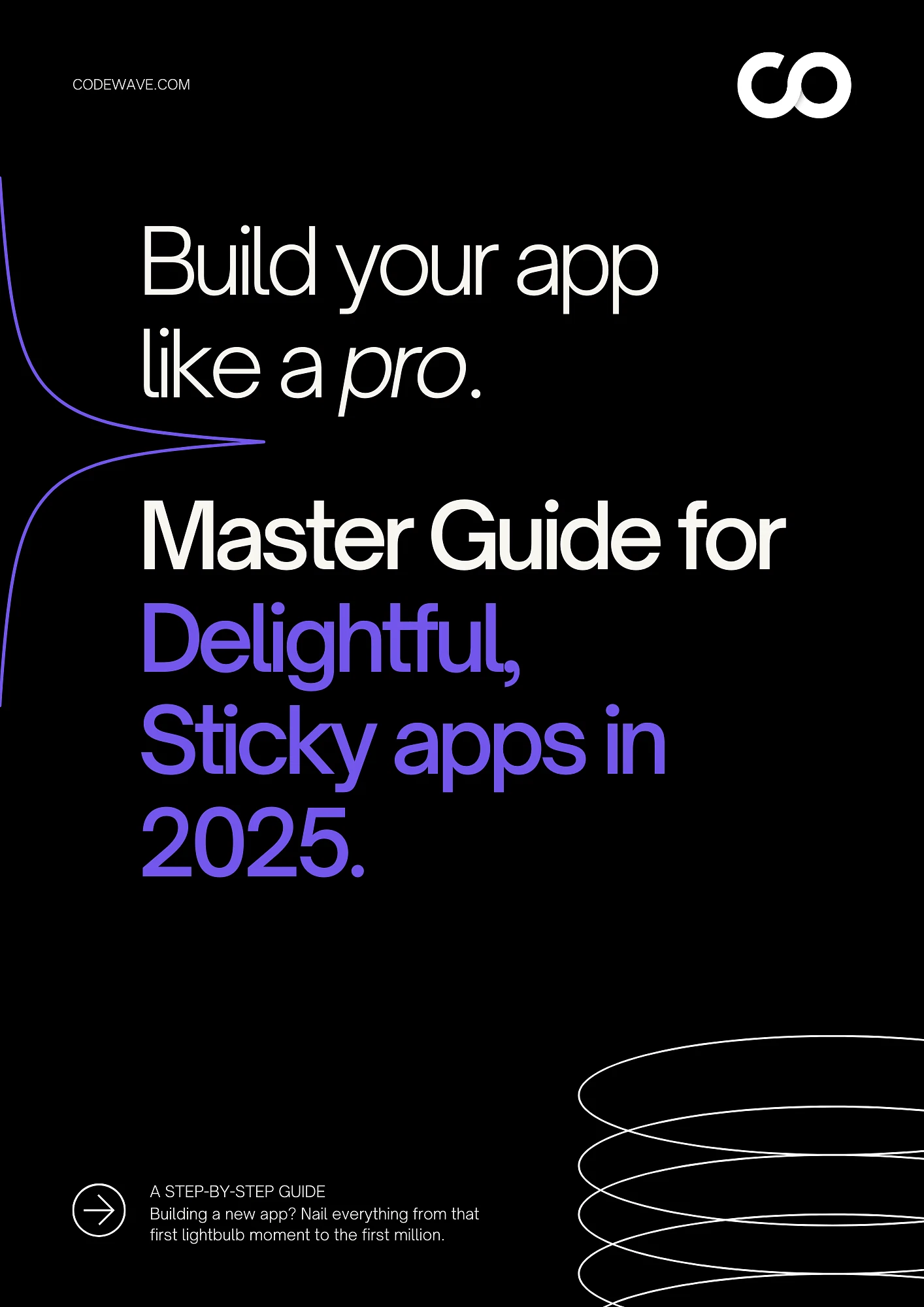Building an app in Australia is an exciting opportunity, but estimating the cost can be challenging. Many business owners struggle to understand why prices differ so widely across development teams and projects. This uncertainty often makes it harder to plan budgets and make confident investment decisions.
App-making charges in Australia vary depending on multiple factors, including the app’s complexity, design, features, technology stack, and the experience of your development partner. Without a clear understanding of these elements, it’s easy to overspend or end up with a product that falls short of expectations.
According to Mordor Intelligence, the global mobile application development market is expected to reach USD 243.55 billion in 2025 and grow to USD 480.58 billion by 2030, at a CAGR of 14.56%. This growth highlights the rising demand for high-quality mobile solutions and the importance of making informed financial choices.
In this guide, you will understand what influences app development costs in Australia in 2025, how pricing is structured, and how to plan your investment wisely, whether you are developing an MVP or scaling an enterprise-grade product.
TL;DR:
- App development in Australia costs between AUD 30,000 and 300,000+, depending on app complexity, features, and technology.
- Developer rates range from AUD 100–200 per hour, with higher costs reflecting advanced skills, compliance, and local expertise.
- Key cost drivers include app complexity, platform choice, design quality, and backend infrastructure.
- Partnering with Codewave ensures transparent pricing, strong technical expertise, and high-quality apps tailored for the Australian market.
Average App Making Charges in Australia
Estimating app-making charges in Australia requires understanding how development scope, technology, and resources influence costs. Prices can differ significantly depending on your project’s complexity, the platforms you target, and the expertise of your development partner. Knowing the typical ranges helps you set realistic budgets and avoid surprises.
1. Typical Cost Ranges
You can expect app development in Australia to fall into the following brackets:
- Basic apps: AUD 30 000 to 80 000
Suitable for apps with limited features, static content, or a single platform.
- Moderately complex apps: AUD 80 000 to 150 000
Includes features like user authentication, payments, maps, and basic integrations with third-party services.
- Complex or enterprise apps: AUD 150 000 to 300 000 and above
Designed for applications with real-time synchronization, custom APIs, AI components, or multiple integrations.
2. Developer Rates in Australia
Hourly rates for Australian developers are higher than global averages, reflecting local expertise, compliance requirements, and collaboration standards:
- Junior to mid-level developers: AUD 100 to 150 per hour
- Senior engineers or specialists: AUD 150 to 200 per hour
Local teams can provide better coordination with design and product functions, while offshore teams may reduce costs but introduce potential communication and quality challenges.
3. Planning Your Budget
To manage costs effectively:
- Start with an MVP (Minimum Viable Product) to validate your idea before scaling.
- Request detailed cost breakdowns instead of lump-sum quotes to understand how each feature contributes to overall expenses.
- Compare local and offshore vendors to balance quality, control, and cost.
- Include future maintenance and scalability in your budget from the outset.
A well-defined budget framework allows you to allocate resources efficiently, make strategic decisions, and ensure your app meets business goals without unexpected financial pressure.
Also Read: Custom Web Application Development: Process, Cost, and Timeline Guide
Key Factors That Affect App Development Costs in Australia
Understanding what drives app-making charges is essential for planning an accurate budget and making informed decisions. Multiple technical and operational factors determine the final cost of your project. Evaluating these elements helps you prioritize features, select the right technology, and choose the most suitable development team.
1. App Complexity & Features
The complexity of your app is the most significant factor affecting costs. Basic apps with simple login screens, static content, or single-platform support require fewer development hours. However, adding features such as:
- Chat functionality
- GPS tracking and location services
- Payment gateways or subscription models
- Advanced AI or AR/VR components
increases development time, testing requirements, and integration effort. Each additional feature contributes directly to app-making charges, so defining the core functionality for your MVP or initial launch is crucial.
2. Platform Choice
Deciding between native and cross-platform development has a direct impact on both cost and performance. Developing native apps for iOS and Android separately ensures optimal device-specific performance but often doubles development time and cost.
Cross-platform frameworks, like Flutter or React Native, allow a single codebase for both platforms. This reduces initial app-making charges and speeds up development, but may require workarounds for device-specific features. When choosing a platform, consider your target audience, required performance, and long-term maintenance needs.
3. Design & User Experience (UX)
Design and UX play a critical role in user engagement, retention, and overall app success. High-quality interfaces, intuitive navigation, and interactive elements require specialized design skills and more development time.
Key considerations include:
- Custom animations and transitions
- Multi-device responsiveness
- Visual consistency with your brand
While investing in design increases upfront costs, it minimizes future redesigns and reduces user churn, providing long-term value.
4. Backend Infrastructure & Integrations
The backend powers your app’s functionality, scalability, and reliability. Apps that require real-time data, cloud-based storage, or integration with third-party services involve more development effort and higher costs.
Important factors include:
- Cloud infrastructure selection (AWS, Azure, Google Cloud)
- API integrations for payments, CRM, or analytics
- Data management, security, and scalability
A robust backend ensures smooth app performance and supports future growth, which can offset higher initial app-making charges.
5. Team Expertise & Location
The expertise and location of your development team influence both cost and quality. Australian developers typically charge between AUD 100 – 150 per hour for mid-level engineers and AUD 150 – 200 per hour for senior specialists.
Local teams offer better coordination, regulatory compliance, and market understanding, while offshore teams may reduce costs but require careful project management to maintain quality. Hybrid models combining local project management with offshore development can provide a balance between cost efficiency and high-quality output.
By evaluating these factors carefully, you can manage your app-making charges effectively, prioritize investment in critical features, and ensure your product aligns with business goals. Planning with these considerations in mind helps you avoid overspending while delivering a high-quality, scalable app.
Also Read: 4 tips for cutting app development costs
App Development Cost Breakdown in Australia
Once you know the average price ranges, the next step is to understand where that money goes. App-making charges in Australia typically cover five key phases, from planning to post-launch maintenance. Each stage plays a technical role in shaping the app’s functionality, scalability, and quality.
1. Discovery & Planning (10%)
This initial stage lays the foundation. Teams define user journeys, select the tech stack, and plan architecture (e.g., monolithic, microservices, or serverless).
Key tasks:
- Requirements gathering and feasibility study
- Tech stack evaluation (React, Flutter, Node.js, etc.)
- Architecture and cloud setup plan
- Cost and risk estimation
A strong discovery phase prevents costly rework later.
2. Design & Prototyping (15%)
Here, UI/UX experts create wireframes and clickable prototypes. This phase ensures intuitive workflows and visual consistency across platforms.
Focus areas:
- Interactive UI prototypes for validation
- Accessibility and multi-device responsiveness
- Design system and component library for developers
An efficient design phase accelerates coding and minimizes later changes.
3. Development (50%)
This phase consumes most of the budget, as it covers building both the frontend and backend layers.
Technical scope:
- Frontend: React Native, Flutter, or native (Swift/Kotlin)
- Backend: Node.js, Django, or Go-based microservices
- APIs and integrations (payments, CRM, analytics)
- CI/CD pipelines and DevOps setup
Choosing between native and cross-platform affects both time and total cost; native offers better performance, while cross-platform saves on development hours.
4. Testing & QA (20%)
Quality assurance validates performance, security, and user experience.
Testing coverage:
- Automated unit, integration, and UI tests
- Load and performance testing
- Security audits (encryption, data protection)
- User acceptance testing
Investing here prevents post-launch defects and downtime.
5. Contingency (5%)
Budgets often reserve 5% for small feature tweaks or integration changes that arise during development. It keeps delivery schedules and contracts flexible.
6. Maintenance Costs (15–20% yearly)
Post-launch, every app requires continuous updates and optimization.
What it includes:
- OS compatibility updates
- Bug fixes and security patches
- Infrastructure monitoring
- Minor feature improvements
Example Budget Snapshot
For an AUD 200,000 project:
- Discovery & Planning: AUD 20,000
- Design & Prototyping: AUD 30,000
- Development: AUD 100,000
- Testing & QA: AUD 40,000
- Contingency: AUD 10,000
Maintenance: AUD 30,000–40,000/year
How to Keep Costs Under Control
- Start with an MVP and scale gradually.
- Demand detailed cost breakdowns instead of flat quotes.
- Use CI/CD pipelines to reduce long-term QA expenses.
- Plan maintenance as part of your lifecycle budget.
A clear cost breakdown helps you plan better, avoid overspending, and ensure each stage adds measurable value to your app. With this clarity, you can make informed choices and move toward launch with confidence.
Why App-Making Charges Are Higher in Australia
App-making charges in Australia are higher than in many other regions due to a combination of technical, operational, and regulatory factors. If you plan to build an app locally, it’s essential to understand why Australian developers command premium rates and how this affects your budget.
- Engineering expertise: Australian developers are highly skilled in full-stack development, mobile engineering, and UX/UI design. Senior-level engineers often handle complex backend architecture, scalable cloud solutions, or integrations with AI/ML modules. Hiring this expertise increases your hourly cost but ensures better code quality, maintainability, and performance.
- Compliance and security requirements: Certain industries, such as finance, healthcare, and education, require strict adherence to local data privacy laws (APP) and security standards. Implementing encryption, secure APIs, and compliance-ready data storage adds technical complexity and additional development hours.
- Quality assurance: Comprehensive QA is a standard expectation. You need automated unit tests, integration tests, load and performance testing, and multi-device compatibility checks. Each test adds hours but reduces the risk of post-launch defects.
- Infrastructure overhead: Setting up DevOps pipelines, cloud architecture (AWS, Azure, or GCP), and CI/CD automation adds both time and cost. Proper infrastructure ensures scalability, high availability, and faster future updates.
- Talent scarcity: The domestic pool of experienced mobile and full-stack engineers is limited. High demand against supply drives hourly rates upward.
In practical terms, Australian app development rates range from AUD 100–200 per hour, depending on the seniority of the team and project complexity. While offshore teams may appear cheaper, you risk delays, miscommunication, and additional integration effort. Understanding these factors helps you evaluate cost versus value and make informed investment decisions.
Key takeaway: Paying a higher rate locally often results in better code quality, regulatory compliance, reliable communication, and long-term savings by reducing rework and maintenance costs.
Hourly Rates by City and Team Type
Knowing the typical hourly rates by location and team type helps you plan your budget more accurately. Rates vary depending on city, developer expertise, and whether you choose freelancers, mid-sized agencies, or enterprise-grade firms.
| City | Freelancers | Mid-Sized Agencies | Enterprise Firms |
| Sydney | 100–180/hr | 150–250/hr | 200–300/hr |
| Melbourne | 90–160/hr | 140–230/hr | 200–280/hr |
| Brisbane | 80–150/hr | 130–220/hr | 180–250/hr |
| Perth | 80–140/hr | 120–200/hr | 170–240/hr |
Freelancers:
- Best for small modules or one-off tasks.
- Limited support for full-stack projects or cross-functional collaboration.
- Require clear specifications and hands-on management.
Mid-sized agencies:
- Offer end-to-end development, including frontend, backend, QA, and design.
- Suitable for startups and SMEs looking for managed workflows.
- Agile processes allow better timeline control and scope management.
Enterprise firms:
- Handle large-scale, complex apps with multiple integrations, microservices architecture, and compliance requirements.
- Provide dedicated project managers, advanced DevOps, and post-launch support.
- Ideal for mission-critical applications requiring performance monitoring and high scalability.
Regional variation: Sydney and Melbourne tend to have the highest rates due to concentrated talent and demand, while Brisbane and Perth are slightly more affordable. Selecting a team requires balancing cost, expertise, and proximity for effective communication.
When calculating total project costs, multiply the expected hours by the relevant hourly rate and add a buffer for QA, contingency, and post-launch maintenance. This approach ensures that your budget aligns with project complexity and team capability, preventing unforeseen financial overruns.
Translating Hourly Rates into Total Project Cost
Understanding how hourly rates impact overall budgets allows you to plan your app development strategy accurately. Total costs depend not just on rates but also on scope, architecture, and team composition.
Example estimates for 2025:
| App Type | Hours | Avg. Rate (AUD/hr) | Approx. Cost |
| MVP | 250–400 | 100–120 | 25,000–50,000 |
| Mid-level | 600–1,200 | 120–150 | 72,000–180,000 |
| Enterprise | 1,500–3,000+ | 150–200 | 225,000–600,000+ |
Engineering effort distribution:
- Backend: 35–45% of total hours for APIs, database, and cloud integration.
- Frontend/mobile: 25–30% for UI, user flows, animations, and cross-platform optimization.
- QA and testing: 15–20% for automated tests, load/performance testing, and multi-device compatibility.
- Project management and deployment: 10% for sprint planning, CI/CD, and environment setup.
Technical considerations:
- Native vs cross-platform frameworks influence development hours; native apps offer device-specific optimization but higher total hours, while cross-platform saves time with trade-offs in advanced performance.
- Complex integrations, such as AI, AR/VR, or real-time syncing, increase backend hours significantly.
- Including DevOps and CI/CD setup in early stages prevents bottlenecks later and ensures smoother scaling.
Practical tip: Estimate total project hours per module, multiply by the applicable rate, and add buffers for QA, contingency, and maintenance. This ensures transparent budgeting and reduces the risk of overspending, giving you a reliable financial roadmap.
Australia vs Global App Development Rates
Comparing Australian rates with global benchmarks clarifies cost positioning and helps decide on local, offshore, or hybrid models.
| Region | USD/hr | AUD Conversion | Notes |
| Australia | 70–130 | 100–200 | High-quality, regulated, reliable communication |
| USA | 80–150 | 120–230 | Premium enterprise pricing |
| Western Europe | 60–120 | 90–180 | Balanced quality and cost |
| Eastern Europe | 30–60 | 45–90 | Cost-efficient but variable QA |
| India/SEA | 20–50 | 30–75 | Lowest cost, strong talent, requires oversight |
Key insights:
- Offshore options reduce labor costs but introduce risks in communication, code quality, and time-zone coordination.
- Hybrid models, combining local project management with offshore development, provide cost efficiency while maintaining control.
- For mission-critical or regulated apps, paying higher local rates ensures compliance, reduced delays, and long-term reliability.
Strategic implication: Selecting a development model should weigh hourly cost vs risk, considering both technical complexity and operational requirements.
By understanding how Australian rates compare globally and what drives app-making charges locally, you can make informed decisions about team selection and budget allocation. This clarity helps you balance cost, quality, and compliance for your app project.
Also Read: Step-by-Step Guide to Mobile App Development for Businesses
Why Codewave Is the Right App Development Partner for Your Business
Choosing the right app development partner is pivotal to the success of your project. Codewave stands out as a trusted partner for businesses aiming to develop impactful mobile applications in Australia.
According to Grand View Research, the global mobile application market was valued at USD 228.98 billion in 2023 and is expected to grow at a 13.2% CAGR from 2024 to 2030, highlighting the rising demand for high-quality apps across industries. This growth underscores the importance of choosing an experienced partner like Codewave that can help businesses design, build, and scale apps that meet evolving market expectations.
1. Proven Track Record and Expertise
With over a decade of experience and more than 400 successful projects delivered, Codewave has established itself as a reliable partner in the app development industry. Their team specializes in building scalable web and mobile applications, leveraging modern technologies like AI, AR/VR, blockchain, and cross-platform frameworks to create apps that deliver exceptional user experiences.
2. Comprehensive Service Offering
Codewave offers end-to-end services, from initial strategy and design to development and post-launch support. Their expertise spans various domains, ensuring that all aspects of your app development are handled with professionalism and attention to detail.
3. Understanding of the Australian Market
Operating in Australia, Codewave is well-versed in local market dynamics, compliance requirements, and user expectations. This local insight ensures that the apps they develop are tailored to meet the specific needs of Australian businesses and consumers.
4. Transparent Pricing and Value
Codewave provides clear and transparent pricing models, helping you understand the cost structure upfront. Their focus is on delivering value, ensuring that the app-making charges align with the quality and impact of the solutions provided.
5. Commitment to Innovation and Quality
Codewave is committed to staying at the forefront of technological advancements. Their approach integrates design thinking with digital transformation, enabling businesses to maximize impact and accelerate innovation through their app development services.
For more information on how Codewave can assist you in developing a mobile app that meets your business objectives.
Conclusion
Building an app in Australia requires more than just an idea—it demands a clear understanding of development costs, the right technology choices, and a dependable team to bring your vision to life. From app complexity and design to team expertise and post-launch support, every decision influences both your budget and your app’s long-term success. By planning strategically and knowing where your money goes, you can make confident, cost-effective decisions that deliver real business value.
At Codewave, we help businesses turn their ideas into powerful, user-focused applications. With over a decade of experience, 400+ successful projects, and a strong presence in Australia, our team blends design thinking with cutting-edge technology to deliver solutions that perform and scale. Whether you’re building an MVP or a full enterprise-grade platform, Codewave ensures transparency, quality, and measurable outcomes every step of the way.
Ready to build your app? Talk to Codewave today and get expert guidance on bringing your app idea to life, efficiently, effectively, and within budget.
FAQs
- How long does it typically take to develop a mobile app in Australia?
The development timeline depends on the app’s complexity and scope. A simple MVP may take 3–4 months, while a mid-level app can take 6–9 months. Enterprise-level apps with complex integrations may extend to 12 months or more, especially when testing and compliance reviews are included.
- Are there any government grants or programs in Australia that support app development?
Yes, several Australian government programs, such as the R&D Tax Incentive and state-based innovation grants, offer funding or tax offsets for businesses investing in technology development. These can significantly reduce overall app-making costs for eligible startups and SMEs.
- What are the hidden costs to consider when building an app in Australia?
Beyond development, you should budget for app store fees, third-party API subscriptions, legal and compliance reviews, cloud hosting, and marketing expenses. These additional costs can account for 15–25% of the total project budget if not planned upfront.
- How often should an app be updated after launch?
Most successful apps release updates every 4–8 weeks. Regular updates help fix bugs, maintain compatibility with new OS versions, and introduce new features that keep users engaged. Budgeting for ongoing maintenance ensures long-term app stability and user satisfaction.
Codewave is a UX first design thinking & digital transformation services company, designing & engineering innovative mobile apps, cloud, & edge solutions.







